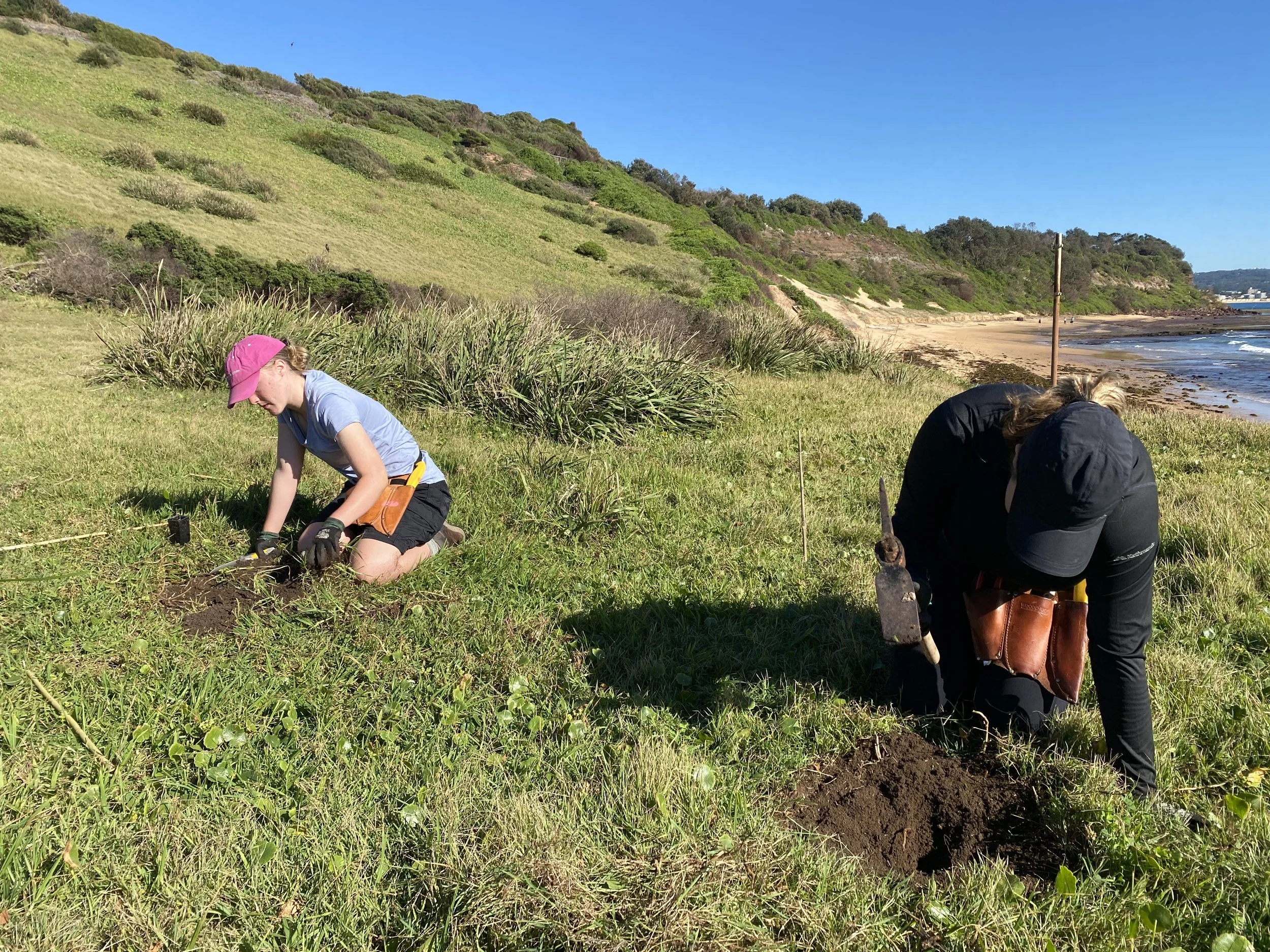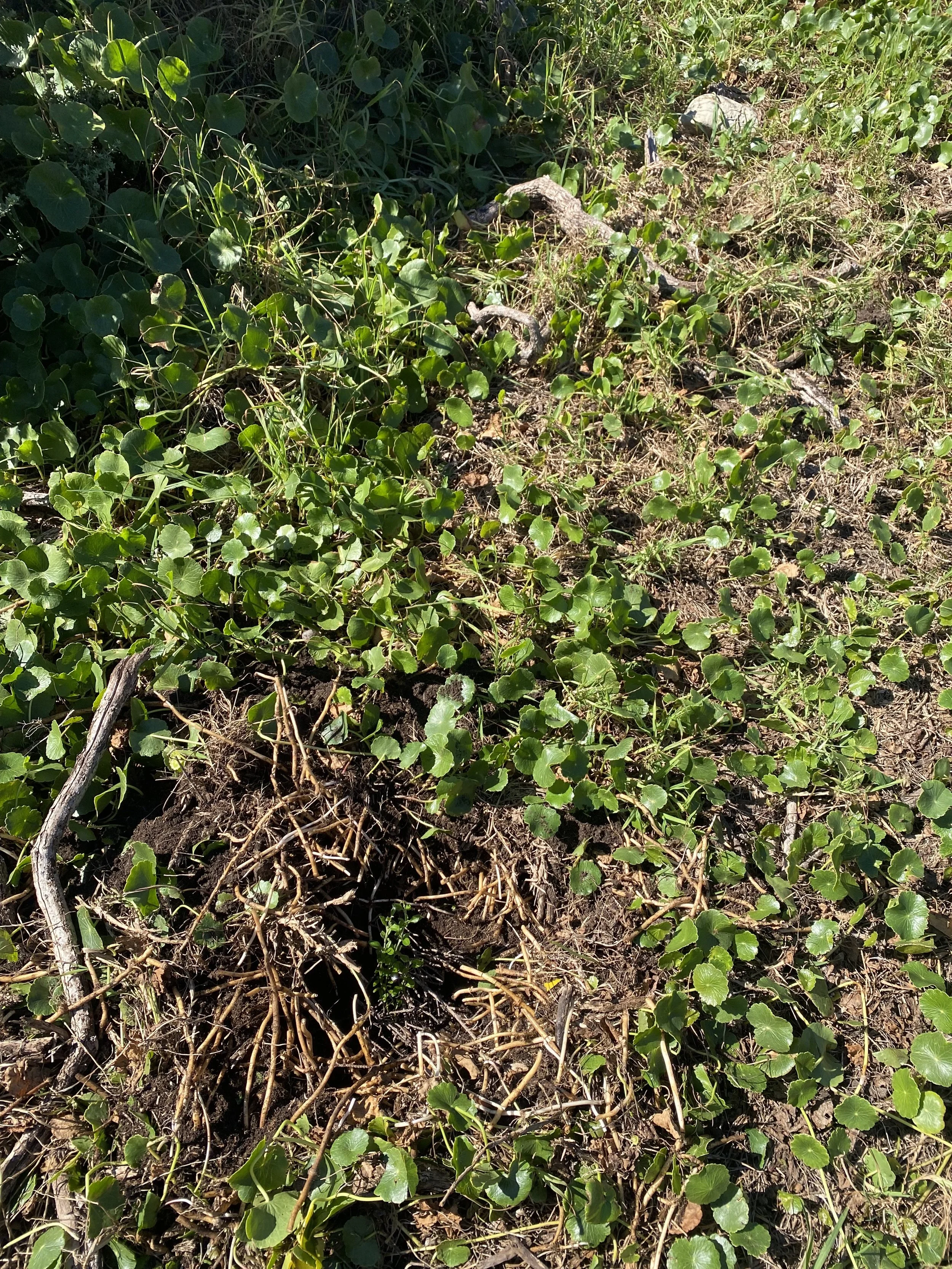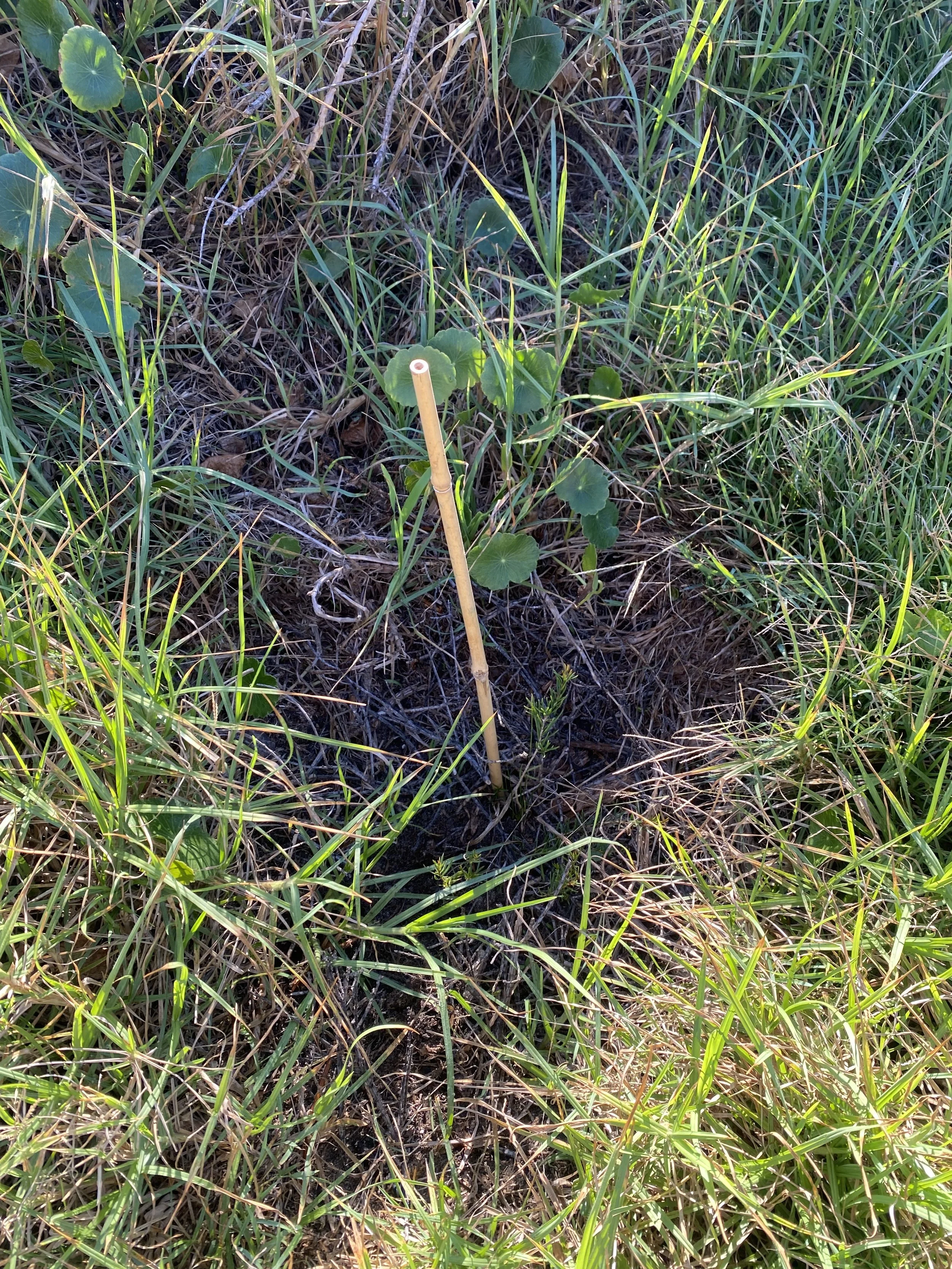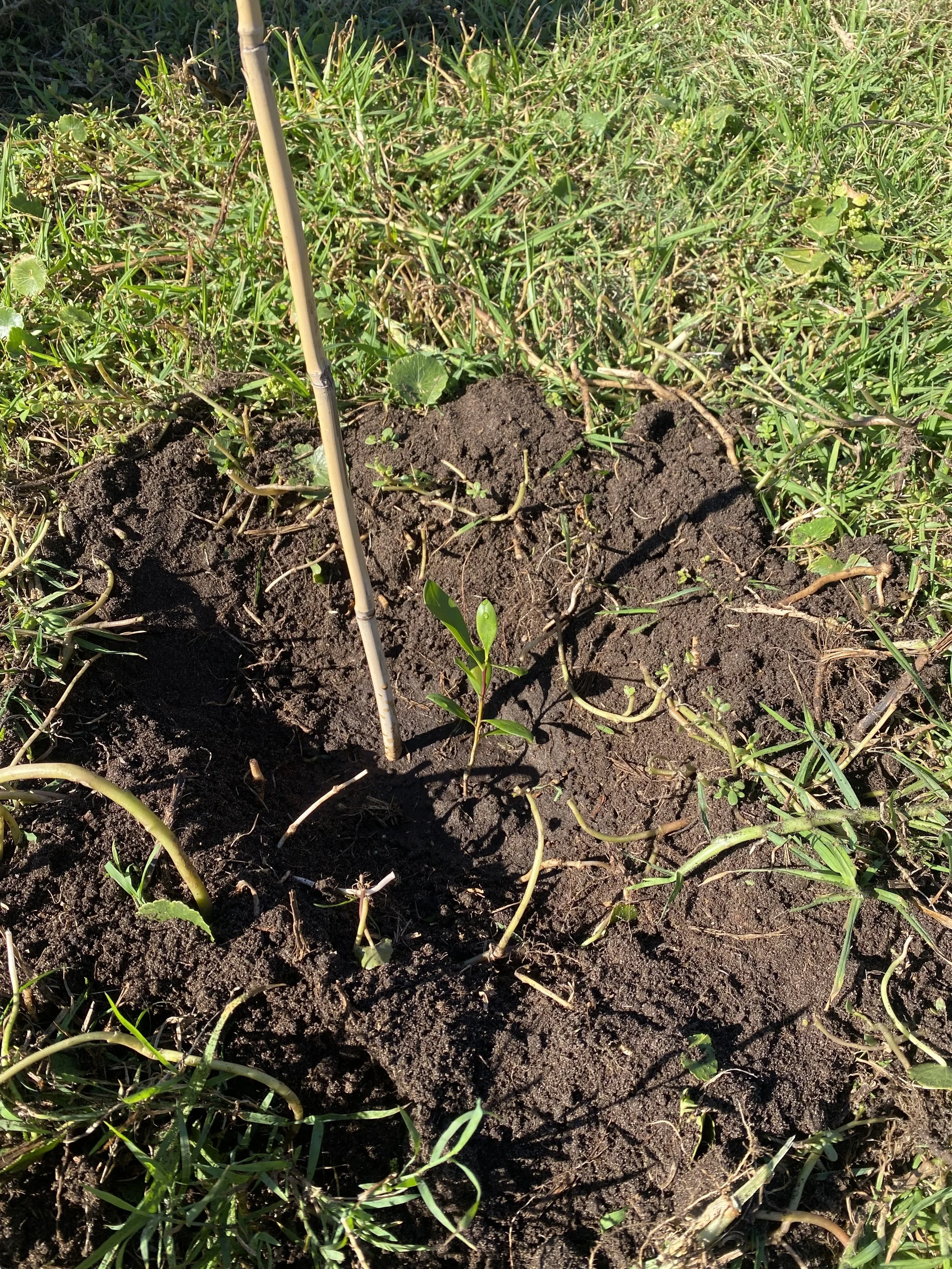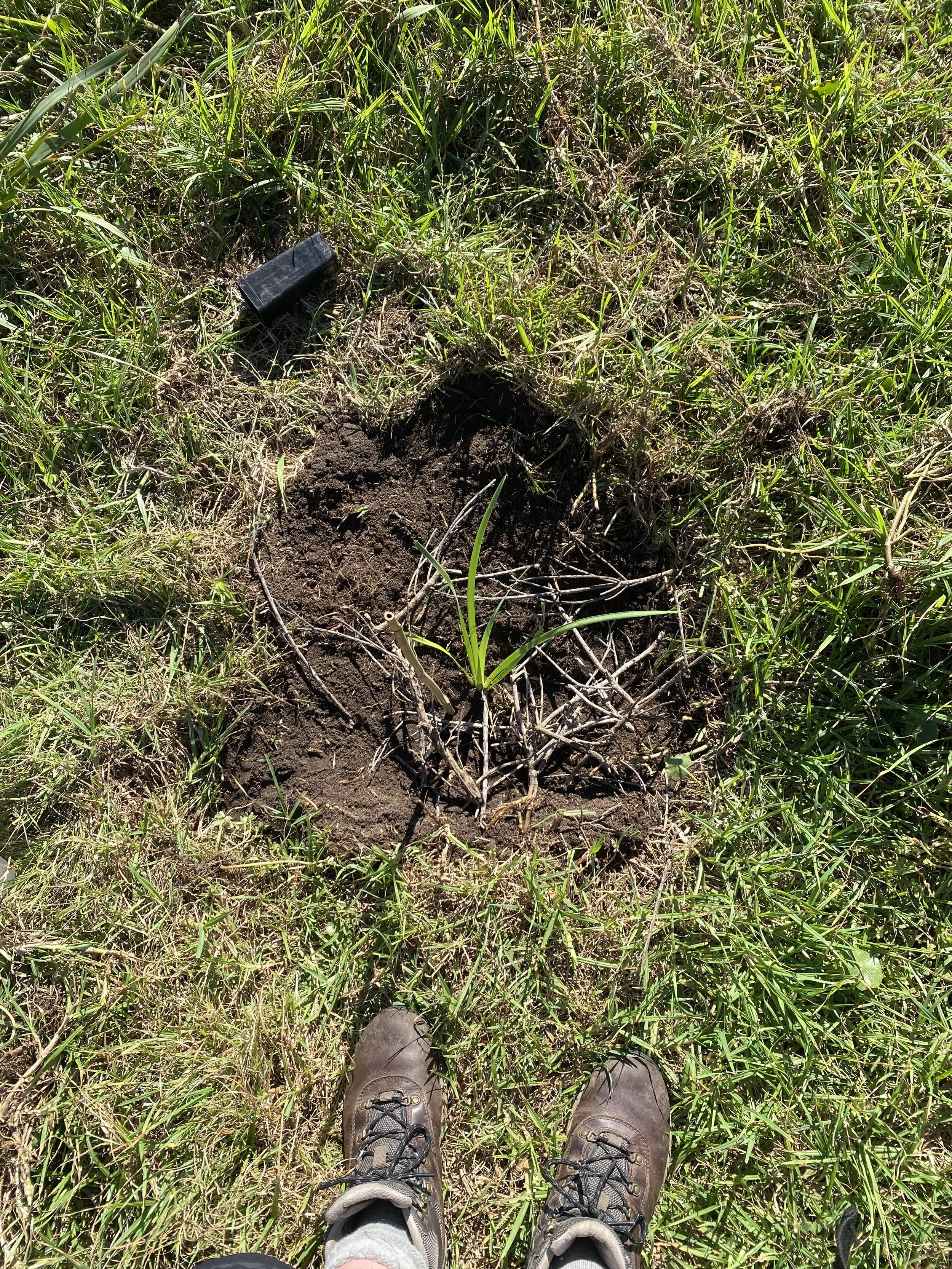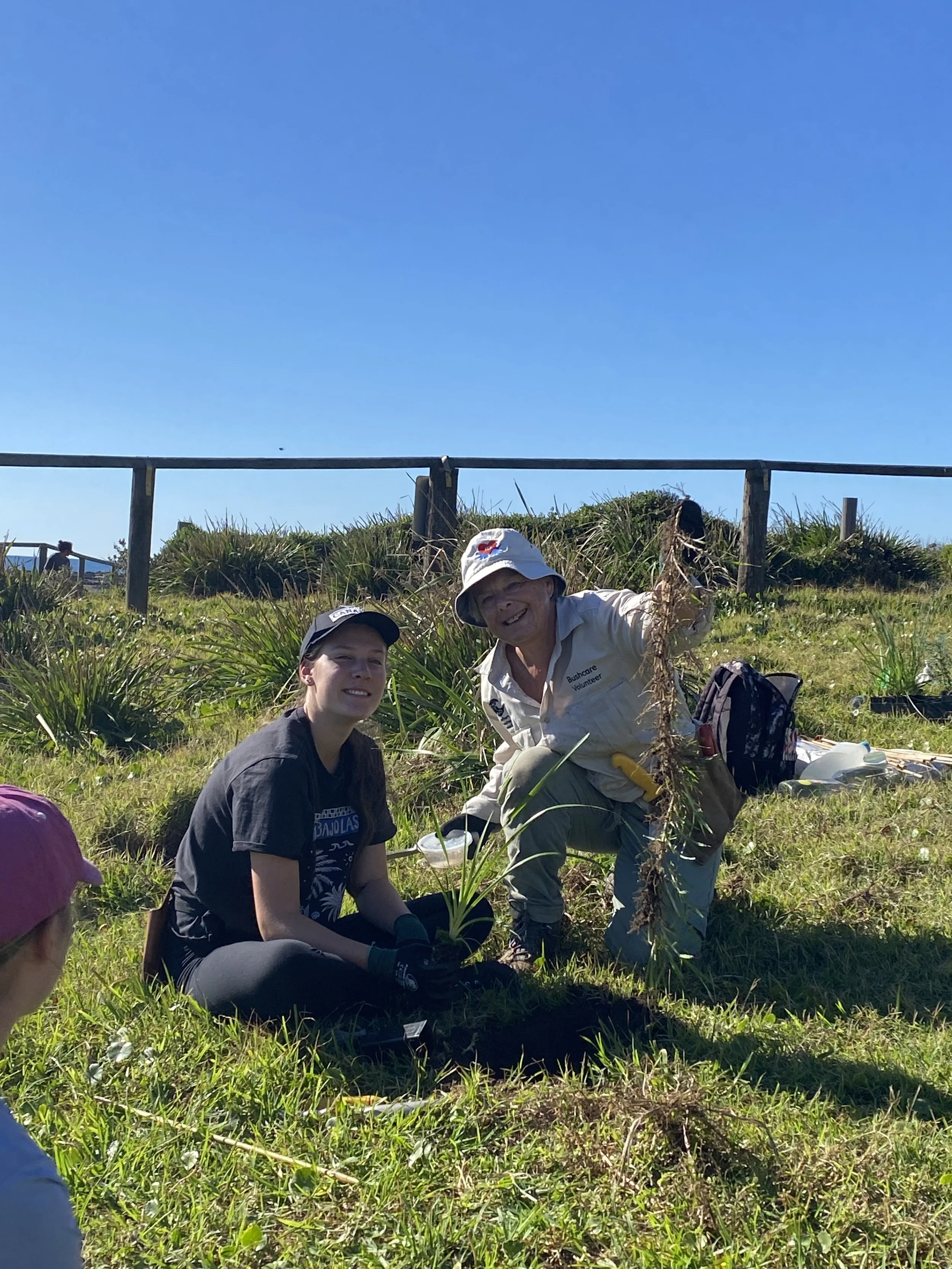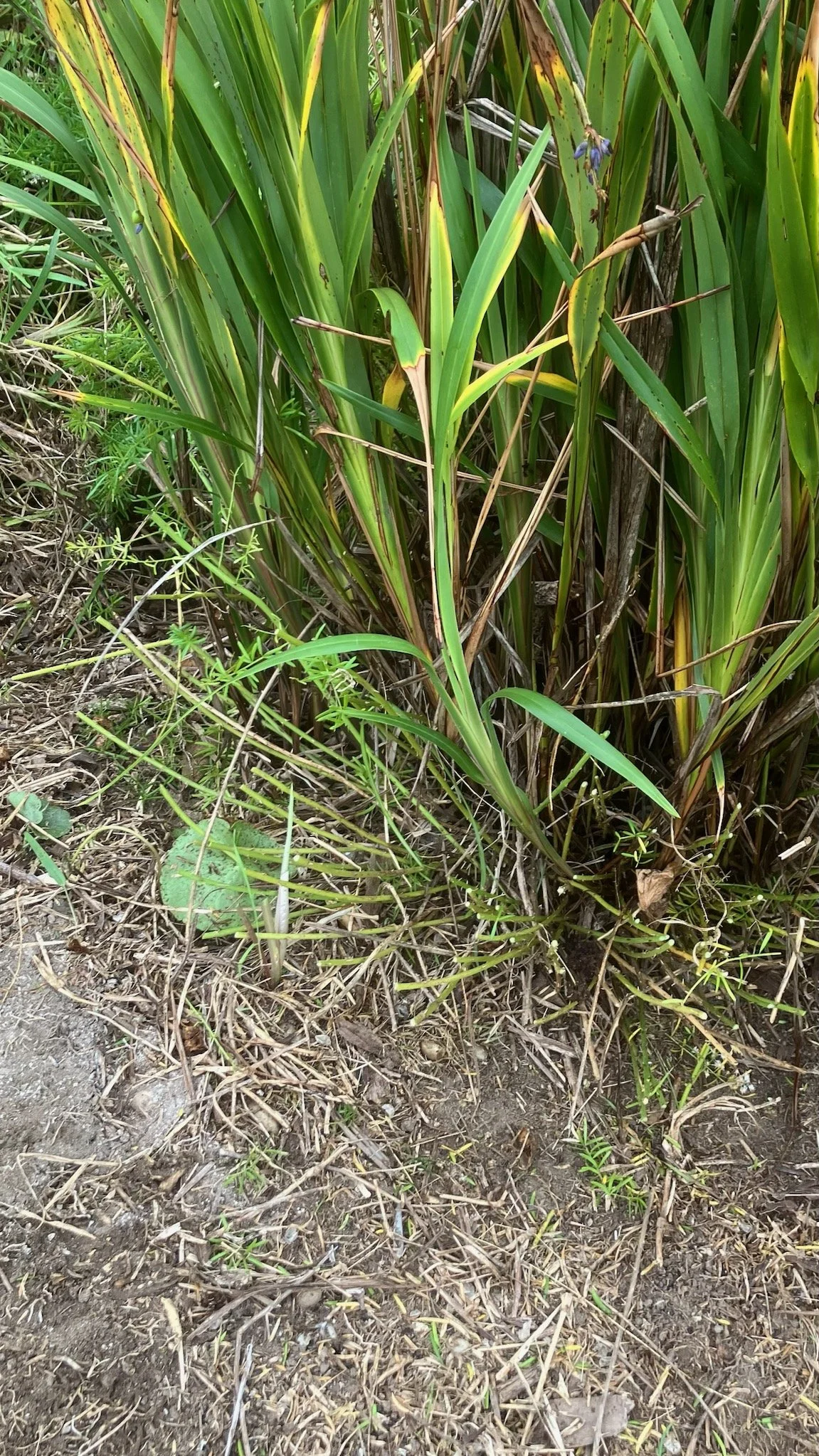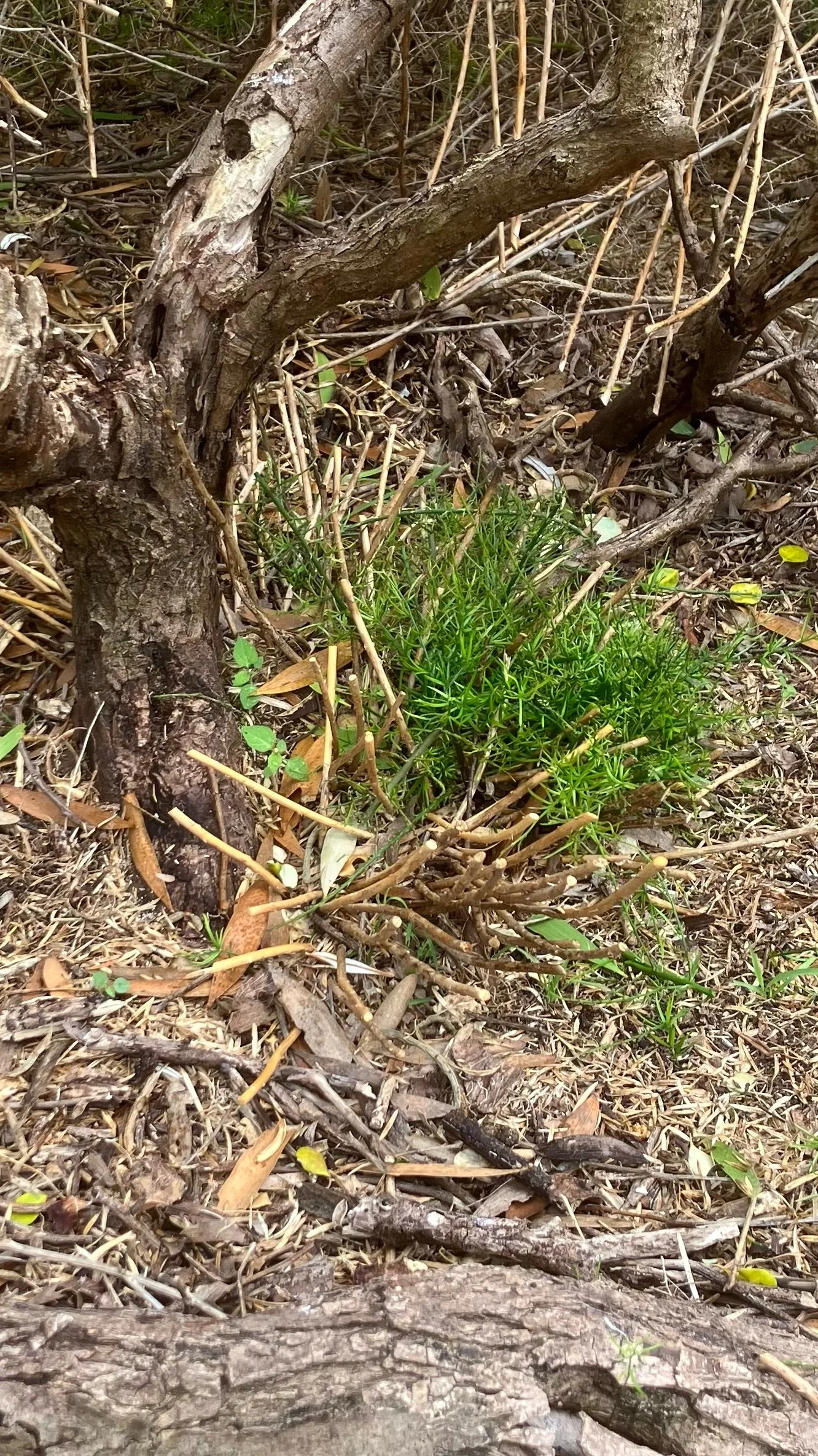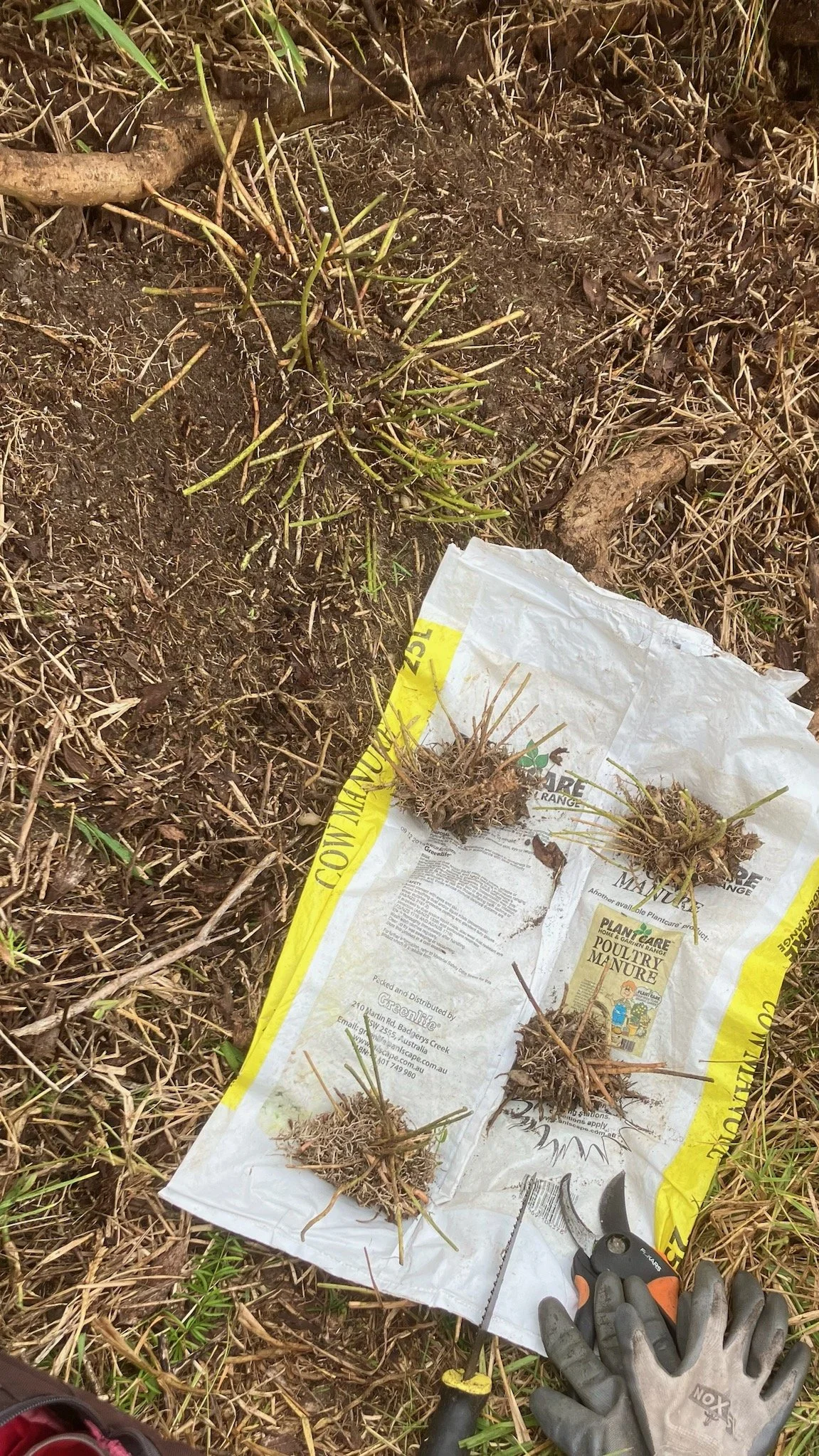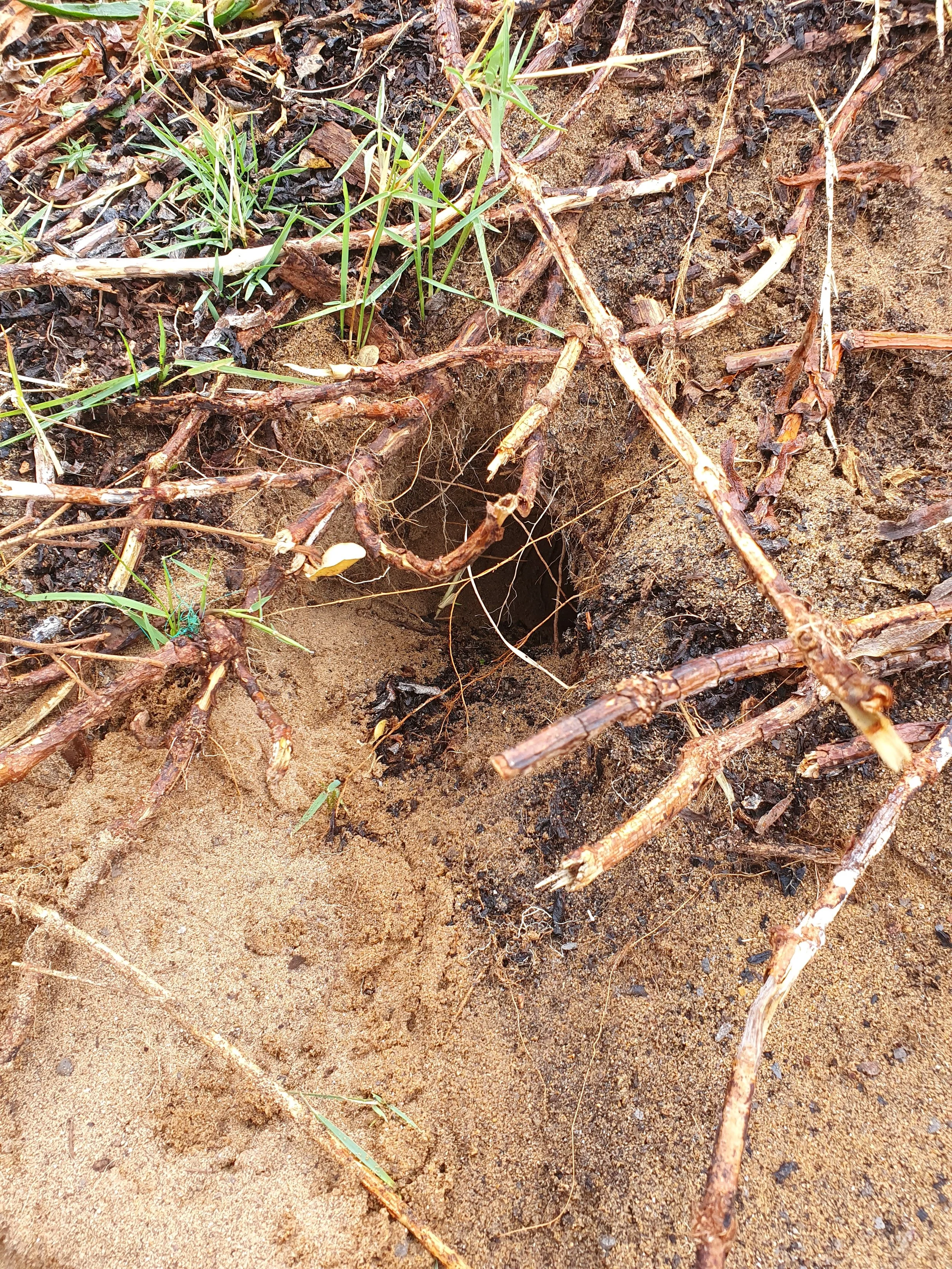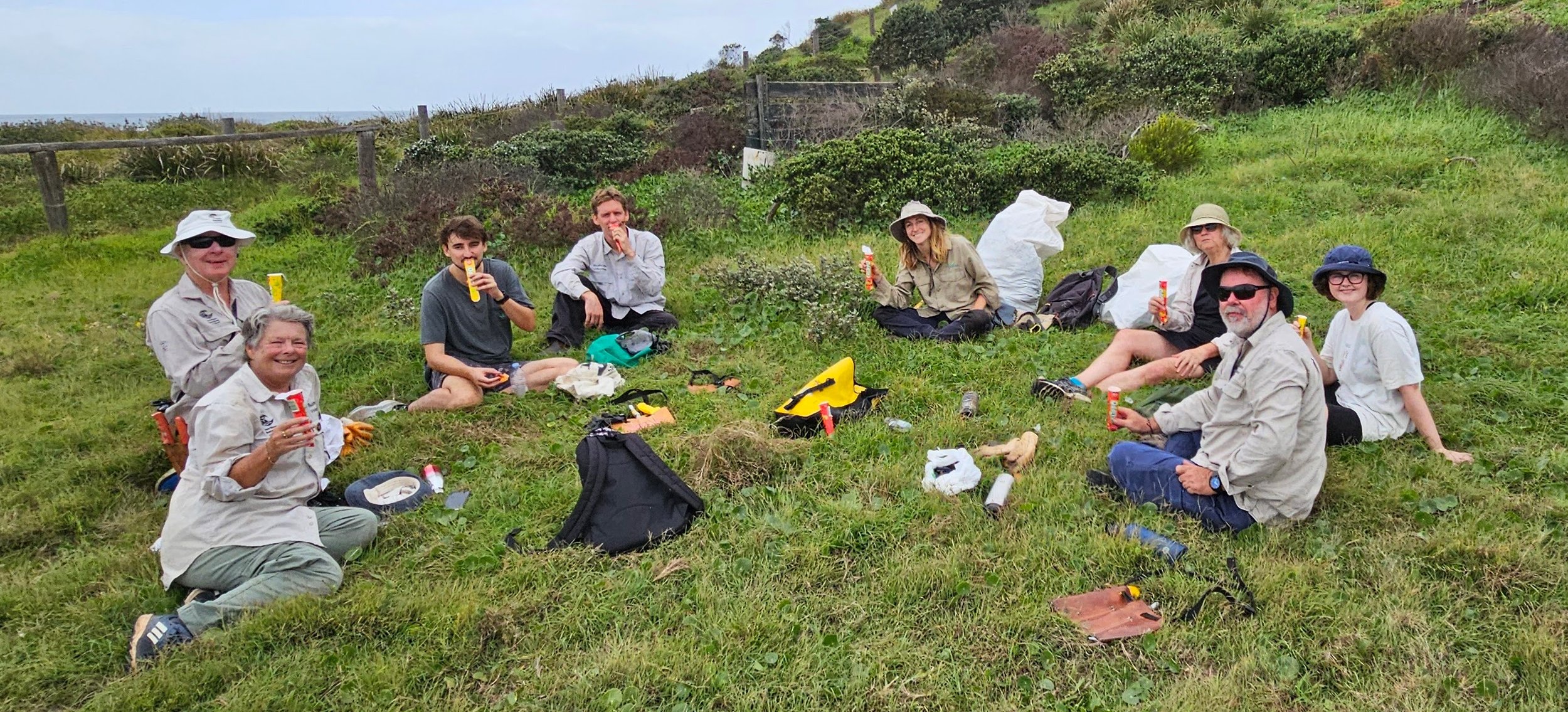
Blog
A big day of planting seedlings
On this morning of sunny blue skies and mild temps we gathered at the carpark, with seven volunteers, trays of plants, bottles of water and belts of tools.
Stefanie and Misima digging water-catchment holes for the new seedlings. Photo by Kathy.
As the weather starts to cool we had big plans for planting today. Lisa had already made preparations by watering the existing seedlings, and the recent rain should have moistened the soil, so the water we add won’t just run off. So on this morning of sunny blue skies and mild temps we gathered at the carpark, with seven volunteers, trays of plants, bottles of water and belts of tools.
Lisa, Kathy, Stefanie, Karina and Misima started the morning with trimming off dead branches from the Westringa fruticosa on the eastern flat, then stomping this to create some mulch to put around our tube stock.
Misima carrying mulch collected from dead Westringias to protect new plantings. Photo by Kathy
Stefanie, Karina and Misima attend the safety briefing by Kathy. What a nice classroom! - Photo by Lisa.
Julie stayed at the top of the site doing all she can to assault and eventually eliminate Asparagus fern. Julie is trying various methods to find the best and quickest way to eliminate it, especially in difficult places, such as under the roots of established plants.
This is Julie’s toilet-brush method of treating asparagus fern enmeshed in a Lomandra. Collect the spears into a brush, tied with one of the spears. Prune back. Then spray with glyphosate.
Only a few Lomandra leaves are cut. No need to get to the crown which would be impossible without a big effort. Photo by Julie.
Alex then arrived on site, took one look at what the girls were doing and said – “I am going to check previous areas for Turkey Rhubarb” – which he did, and then found the site is full of small Asparagus ferns and bitou! Des, Merrilyn and I have another convert to the big issue of Asparagus fern on site!
Alex on the slope weeding bitou seedlings and just stunned with
the amount of small asparagus ferns! Photo by Lisa.
In the mean time Lisa, Kathy, Stefanie, Karina and Misima created small well like structures for the planting of the tube stock on the flat. The wells will collect the rain water and funnel it down into the newly planted tube stock. The exposed earth was then covered with the Westringa fruticosa mulch we created on site, stomping the dead branches down to a suitable size. Bamboo stakes where then driven into the ground, marking the home of each new seedling.
Correa alba just planted in the well, next the soil would be covered with mulch and a bamboo stake put in the ground next to the plant, so that it does not get trampled. Photo by Stefanie.
After morning tea, Alex went back onto weed patrol and the rest of us planted the balance of tube stock – so we got in 40 plants. Given the attention to detail in planting we are hoping for a high success rate in survival.
An overview of some the tube stock planted on the flat. Photo by Stefanie.
Lisa and Karina removing Kikuyu from planting halos. Photo by Kathy.
Text by Lisa.
Reefcare Day Report: New members join us on a cool morning
This morning’s focus was mature Asparagus Fern which is deeply entangled with natives and thick grass. No fruit but lots of flowering evident.
One of the magpies checking out Leila, or seeing if she has any food of interest – photo by Mary Clarkson
Whilst the day was overcast, it was good to work in cooler weather.
As we walked up to the top of the headland, we checked the hang glider site, which has remedial works done on it after last winter’s rain. There are now Bitou Bush clumps growing in the hessian matting. The plants are showing Bitou tip moth which eats out the shoots and stunts growth for a while.
This morning’s focus was mature Asparagus Fern which is deeply entangled with natives and thick grass. No fruit but lots of flowering evident. The effort to dig out 4 crowns and expose a large crown. Given the drizzly weather, I’ll treat the large crown with glyphosate next time. (I’ll send this as Photo 2)
The Asparagus is growing inside the large Dianella clump and is impossible to dig out- so will paint glyphosate on its stems next time.
Aspargus in clump of Dianella - challenging to remove.
We have the same problem with Asparagus in the Correa alba clump – see photo below. This will probably require glyphosate as well, otherwise there is no way to remove the weed without damaging the native plant.
Aspargus in a correa alba
Julie checked the Asparagus clump which was treated a month ago. Most of the crown is dead but a section has regrown slightly stunted leaves.
Aspargus reshooting after poison last month.
Julies haul of aspargus rhyzomes
We hope this is not a rabbit hole!
We had morning tea with a beautiful view over the ocean. It was nice to chat to our new members.
Morning tea on the western slope.
As per usual the magpies came to visit and check to see if we had any snacks for them.
Inquisitive magpie
After morning tea we continue working in the quiet drizzle, with Lisa working on the Oat grass and Merrilyn working on the ever-growing Bitou.
It was a nice morning overall and everyone seemed to enjoy themselves. We had a good turn up, and everyone stayed despite the on and off drizzle all morning. Below are some more photos of the morning’s activity.

